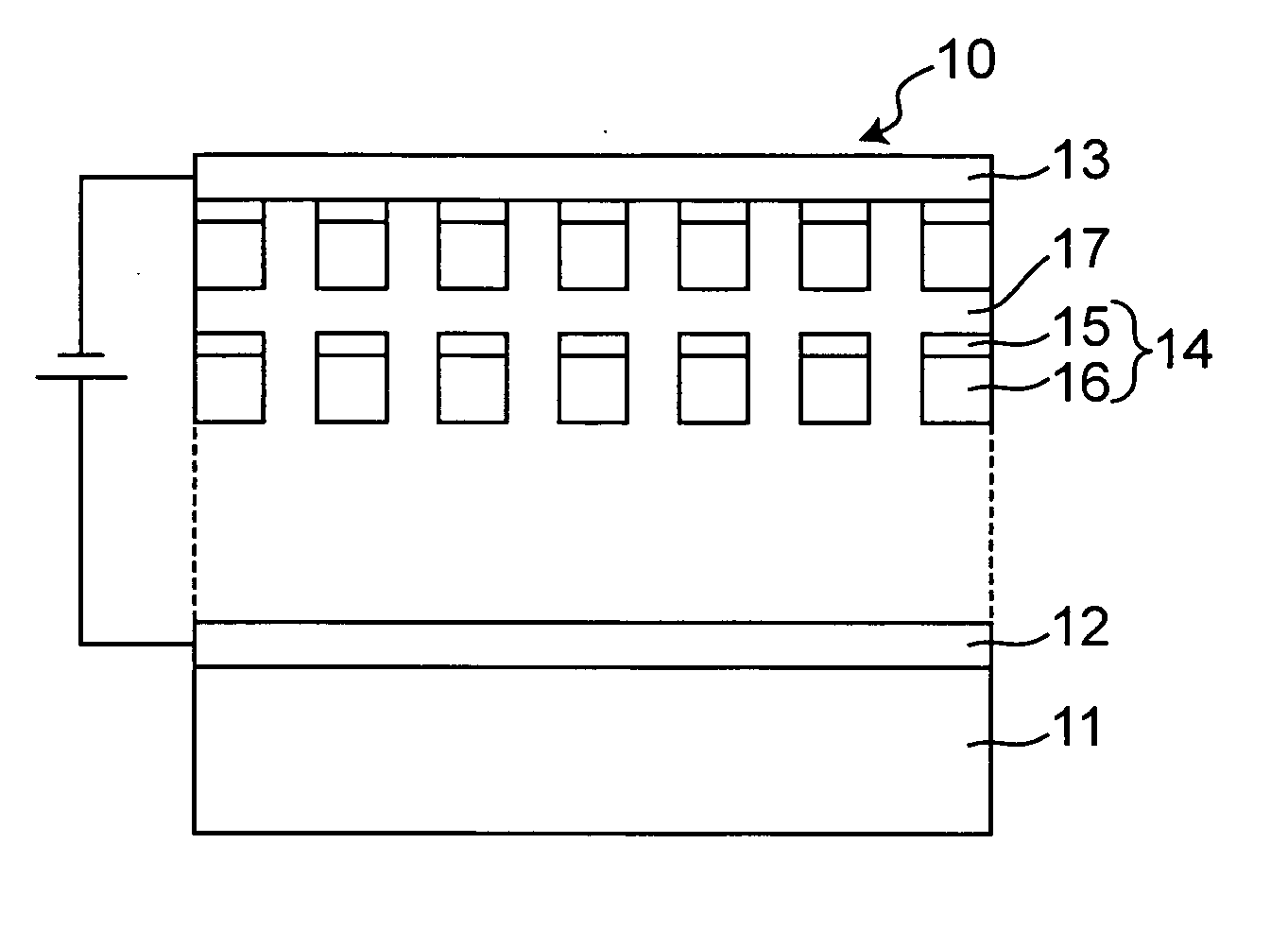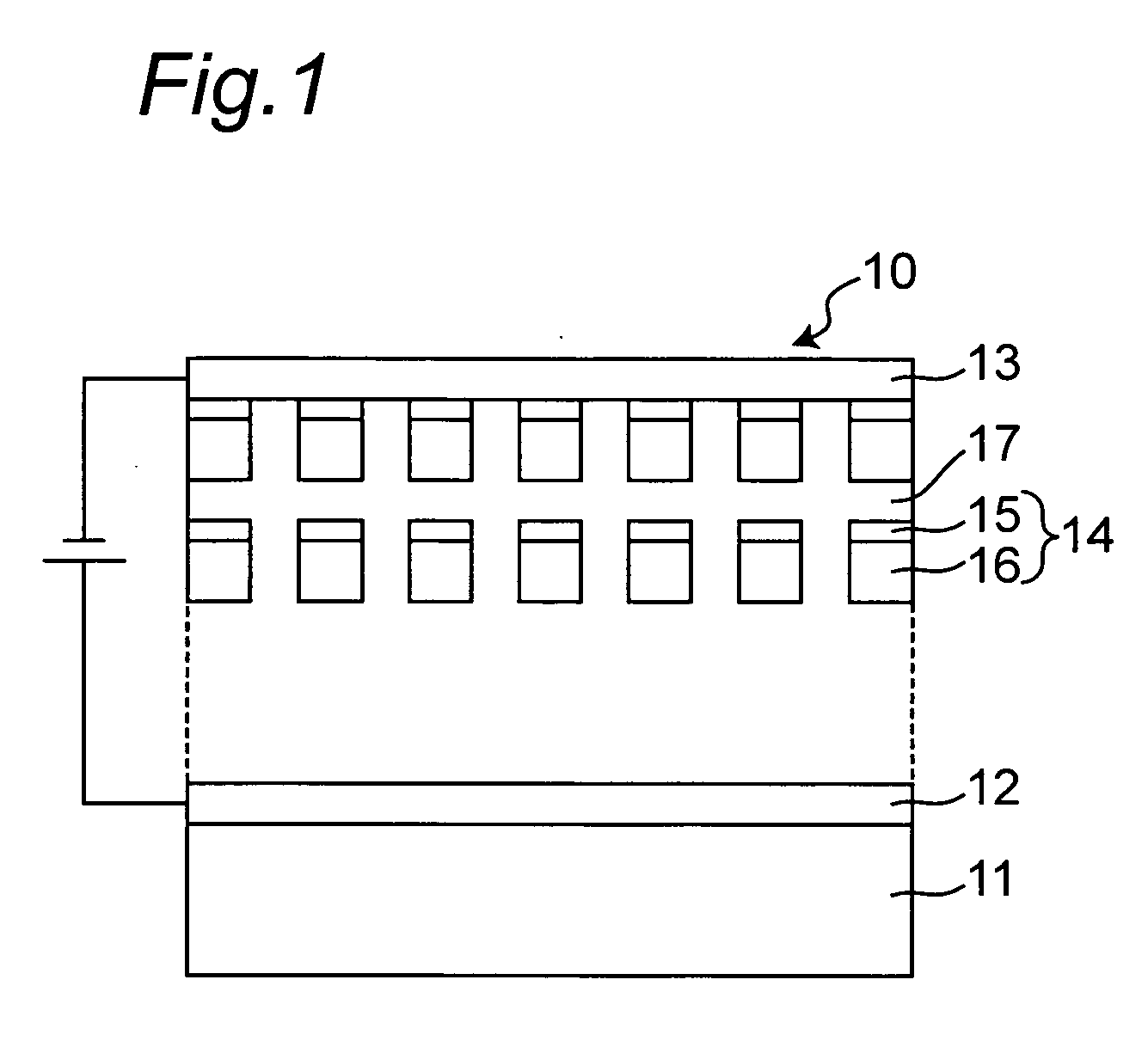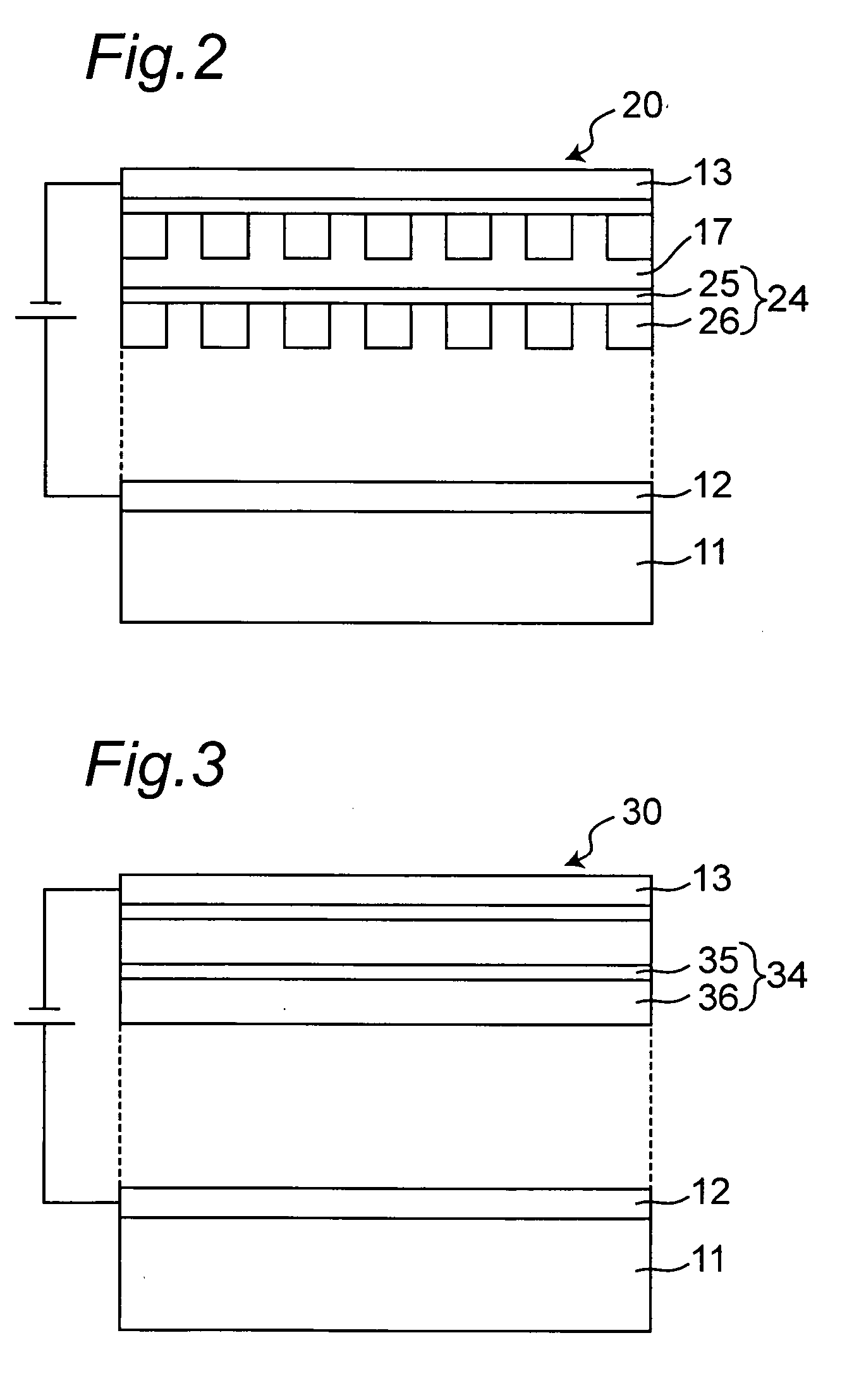Electroluminescent device and display
a technology of electroluminescent devices and displays, applied in the direction of discharge tubes/lamp details, discharge tubes/lamp details, cathode ray tubes/electron beam tubes, etc., can solve the problems of low luminous efficiency and brightness, difficulty in increasing the size of one semiconductor substrate, and increasing the manufacturing cost proportional to the number of elements, etc., to achieve high brightness, low voltage drive, and high luminous efficiency
- Summary
- Abstract
- Description
- Claims
- Application Information
AI Technical Summary
Benefits of technology
Problems solved by technology
Method used
Image
Examples
embodiment 1
[0044] An electroluminescent element according to an embodiment 1 of the present invention will be explained by using FIG. 1. FIG. 1 is a cross-sectional view showing the configuration of an electroluminescent element 10 according to the embodiment 1. The electroluminescent element 10 has a multi-layer structure, in which a pair of positive electrode 12 and negative electrode 13 facing each other is provided on a substrate 11. Further, in between the positive electrode 12 and the negative electrode 13, a phosphor layer 14 consisting of a semiconductor layer 15 and a phosphor layer 16 is laminated repeatedly via a transparent conductive layer 17. The semiconductor layer 15 and the phosphor layer 16 constituting the phosphor layer 14 is a discontinuous layer, in which discontinuous parts between respective phosphor layers 14 are filled with the transparent conductive layer 17. Note that although only two sets of phosphor layers 14 are described in FIG. 1, the present invention is not ...
embodiment 2
[0052] An electroluminescent element 20 according to an embodiment 2 of the present invention will be described by using FIG. 2. Comparing with the electroluminescent element of the embodiment 1, the electroluminescent element 20 is different in that a semiconductor layer 25 of a wide band-gap constituting a phosphor layer 24 is a continuous layer.
embodiment 3
[0053] An electroluminescent element 30 according to an embodiment 3 will be described by using FIG. 3. Comparing with the electroluminescent element of the embodiment 1, the electroluminescent element 30 is different in that both of a semiconductor layer 35 of a wide band-gap and a phosphor layer 36 constituting a phosphor layer 34 are continuous layers.
PUM
 Login to View More
Login to View More Abstract
Description
Claims
Application Information
 Login to View More
Login to View More - R&D
- Intellectual Property
- Life Sciences
- Materials
- Tech Scout
- Unparalleled Data Quality
- Higher Quality Content
- 60% Fewer Hallucinations
Browse by: Latest US Patents, China's latest patents, Technical Efficacy Thesaurus, Application Domain, Technology Topic, Popular Technical Reports.
© 2025 PatSnap. All rights reserved.Legal|Privacy policy|Modern Slavery Act Transparency Statement|Sitemap|About US| Contact US: help@patsnap.com



